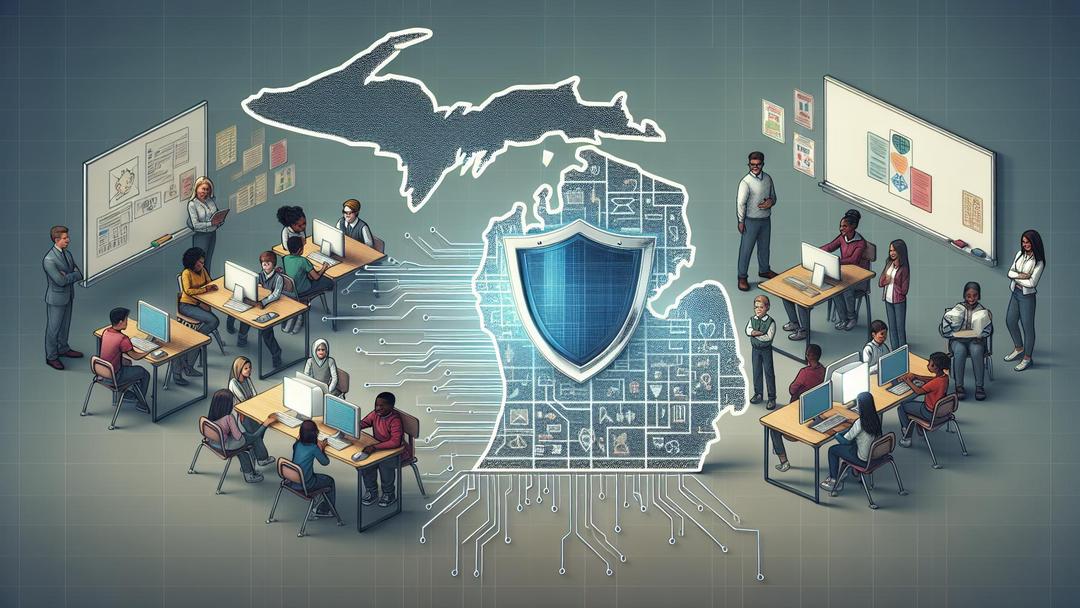Table of Contents
Michigan School Cybersecurity is no longer a niche IT topic; it is a daily operational issue for every district. From ransomware to data leaks, the cost of disruption is rising.
Families, teachers, and administrators deserve safe learning environments. When systems fail, instruction halts, services stall, and trust erodes fast.
This analysis builds on an in-depth editorial on protecting K-12 systems and offers actionable steps schools can take now.
Michigan School Cybersecurity: Key Takeaway
- Every district needs a funded, tested plan that prioritizes backups, phishing defense, and rapid recovery to keep classrooms open and student data safe.
Practical tools to strengthen your school’s defenses
- IDrive – Secure, affordable cloud backups that speed district recovery after ransomware.
- 1Password – Role-based password management for staff and administrators.
- Auvik – Network visibility and monitoring to spot issues before they disrupt learning.
- EasyDMARC – Protect district email domains and cut off phishing at the source.
- Tenable – Scan and fix vulnerabilities across endpoints and servers.
- Tresorit – End-to-end encrypted file sharing for sensitive student records.
- Optery – Remove exposed personal data to reduce social-engineering risk.
Why Michigan School Cybersecurity Demands Urgency
Attackers target schools because they hold valuable data, run on tight budgets, and cannot tolerate downtime. Michigan School Cybersecurity must account for this reality with layered defenses and clear response playbooks.
Districts should assume incidents will happen and plan to limit impact, shorten outages, and protect students.
We’ve already seen the consequences. A recent outage in South Lyon shows how a single event can disrupt operations statewide; learn more from this Michigan district incident overview. The PowerSchool data breach is another reminder: student data is a high-value target for criminals.
Build From Standards That Work
Michigan School Cybersecurity programs are stronger when aligned to proven guidance such as the NIST Cybersecurity Framework and the CISA K–12 report. These resources translate complex risks into practical controls schools can actually implement.
Focus on the Big Three: Phishing, Ransomware, and Identity
Michigan School Cybersecurity often starts with reducing human risk. Phishing remains the top entry point. Training paired with email authentication (SPF, DKIM, DMARC) cuts successful attacks.
Ransomware remains profitable for criminals, especially via ransomware-as-a-service kits. Finally, identity security, strong authentication and least privilege, limits blast radius when accounts are abused.
Actionable Moves Districts Can Take Now
- Tested, offline backups with routine recovery drills
- Multi-factor authentication (MFA) for staff, vendors, and admins
- Email security and phishing simulations with timely coaching
- 24/7 monitoring or a managed detection and response partner
- Patch management aligned to a defined service-level objective
- Incident response runbooks with roles, contacts, and legal steps
For deeper best practices on stopping ransomware, review the FBI ransomware guidance.
Funding, Talent, and Partnerships
Michigan School Cybersecurity requires resources. Smaller districts may lack full-time security staff. Shared services, regional co-ops, and statewide support can bridge gaps.
Consider grant opportunities, cyber insurance requirements, and participation in threat-sharing communities. Collaboration with state agencies, ISDs, and trusted vendors helps districts mature faster and more affordably.
Michigan School Cybersecurity also benefits from continuous improvement. Start with a baseline assessment, track progress quarterly, and tie outcomes to classroom uptime, data protection, and regulatory compliance goals.
Implications for Families, Teachers, and Administrators
Stronger Michigan School Cybersecurity protects learning time, student privacy, and district reputations.
When systems are resilient, report cards, payroll, transportation, and special education services continue, even during attempted attacks. Parents see stability and transparency, which builds trust.
But there are tradeoffs. Michigan School Cybersecurity investments can strain budgets, and new controls may add friction for staff. Careful change management and user-friendly tools are essential. Balanced governance, aligned to student outcomes, keeps security from overshadowing instruction.
Strengthen defenses before the next incident
- Passpack – Centralize credentials and reduce password reuse.
- 1Password – Simple MFA and secure vaults for faculty teams.
- IDrive – Immutable backups to outsmart ransomware rollback tactics.
- EasyDMARC – Stop spoofing that targets parents and staff.
- Tenable – Continuous visibility of critical vulnerabilities.
- Auvik – Map and monitor campus networks in minutes.
- Tresorit – Secure collaboration for administrators and counselors.
Conclusion
Michigan School Cybersecurity is not optional—it is the foundation of modern learning. Districts that plan, fund, and test their defenses bounce back faster from incidents.
Michigan School Cybersecurity also starts with people: empower staff with training, enable MFA everywhere, and communicate clearly after any event. Families want honesty and a path to recovery.
By aligning to proven standards, building strong backups, and practicing response, Michigan School Cybersecurity can protect classrooms, records, and trust, no matter how threats evolve.
FAQs
What is the first step for a small district?
– Start with a risk assessment and prioritize backups, MFA, and email security.
How often should we test backups?
– Quarterly at minimum; include full recovery drills for key systems.
What training reduces the most risk?
– Phishing simulations with just-in-time coaching and annual refresher courses.
Do we need cyber insurance?
– It’s wise; many insurers now require MFA, patching, and incident plans.
Where can we find trusted guidance?
– Use the NIST Framework, CISA K–12 report, and FBI ransomware resources.
About Michigan Department of Education
The Michigan Department of Education supports K–12 districts with policy, guidance, and resources that advance student success statewide.
While not a cybersecurity regulator, the department encourages best practices and collaboration with state and local partners.
Districts should pair academic priorities with strong security controls to keep teaching and services running.
Additional Resources
Explore third-party guidance aligned to Michigan School Cybersecurity priorities:
- CISA K–12 report
- NIST Cybersecurity Framework
- FBI ransomware guidance
- Six steps to defend against ransomware
LearnWorlds,
CloudTalk. Save time, secure content, and engage your community.





